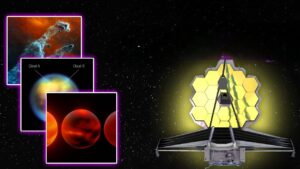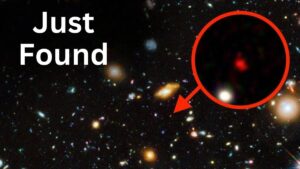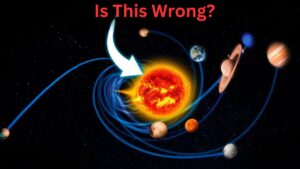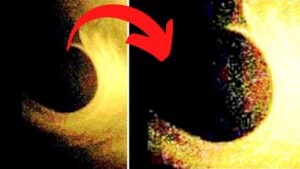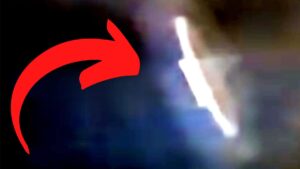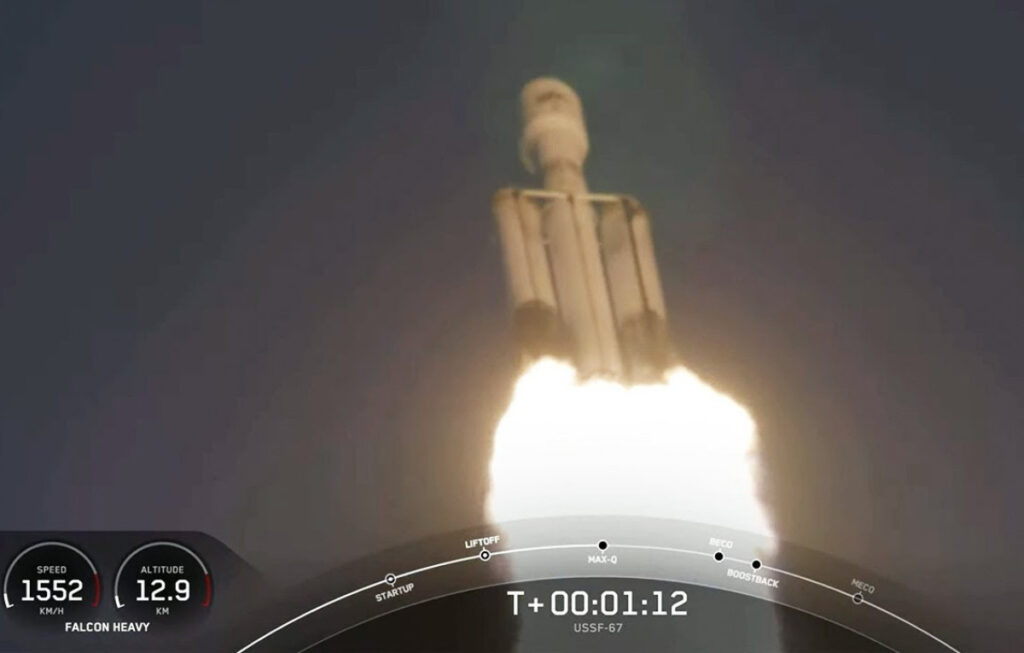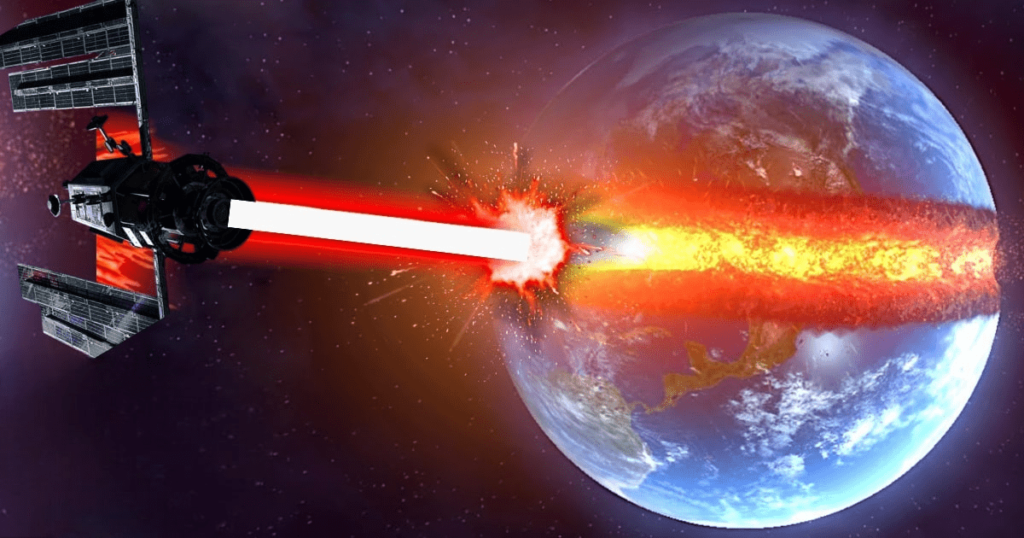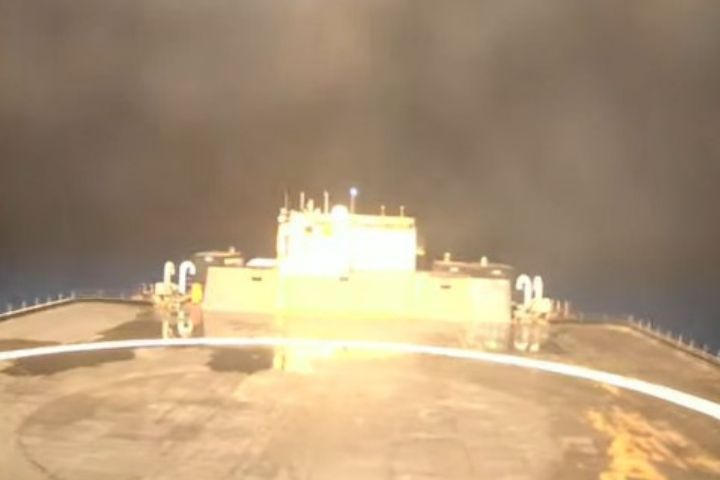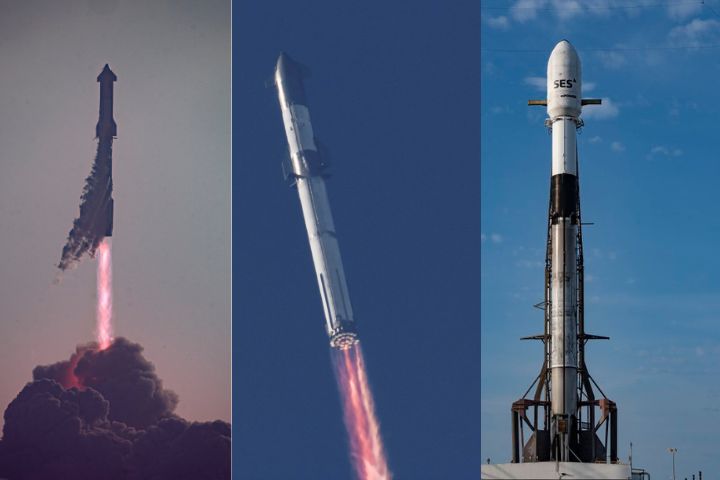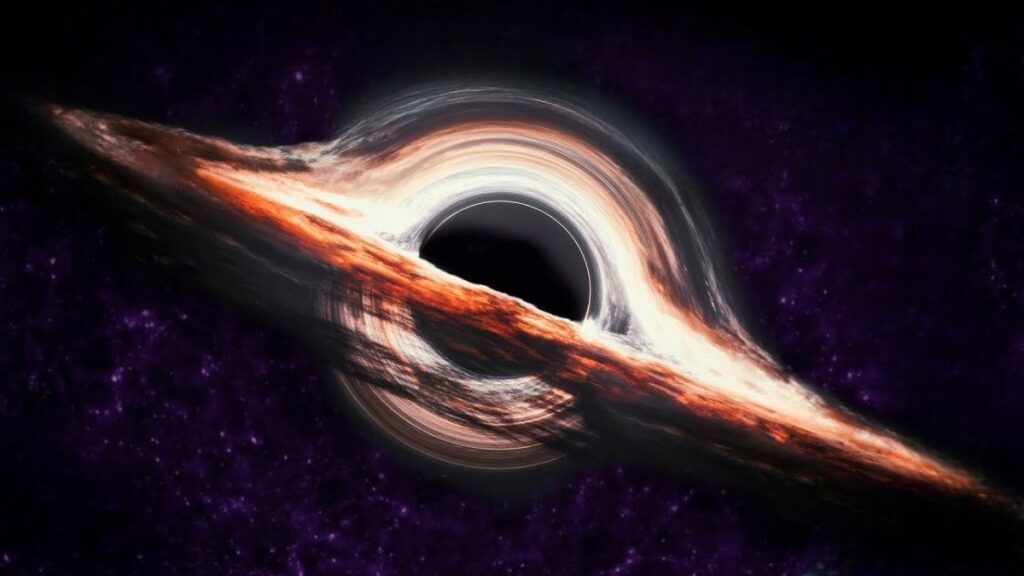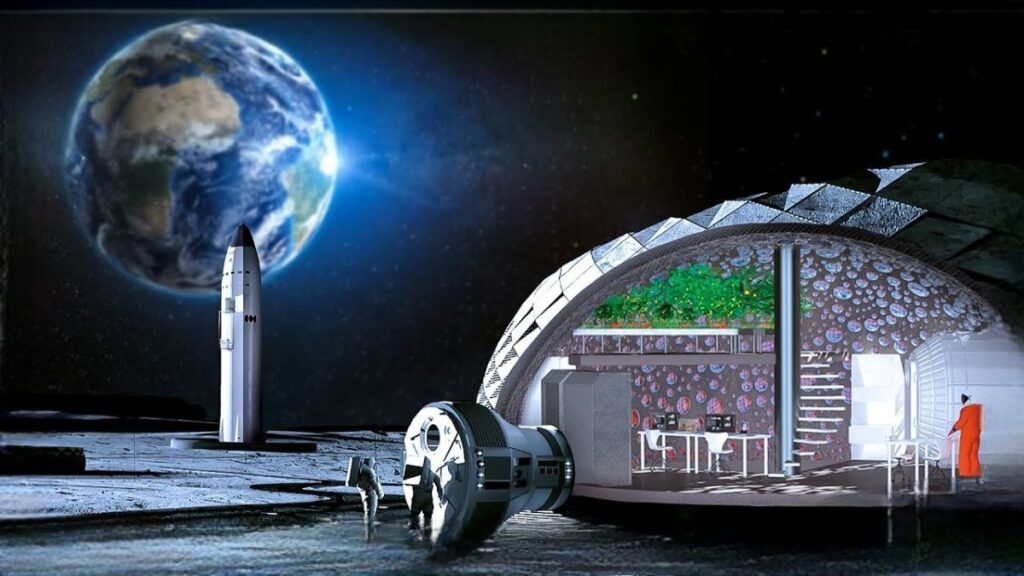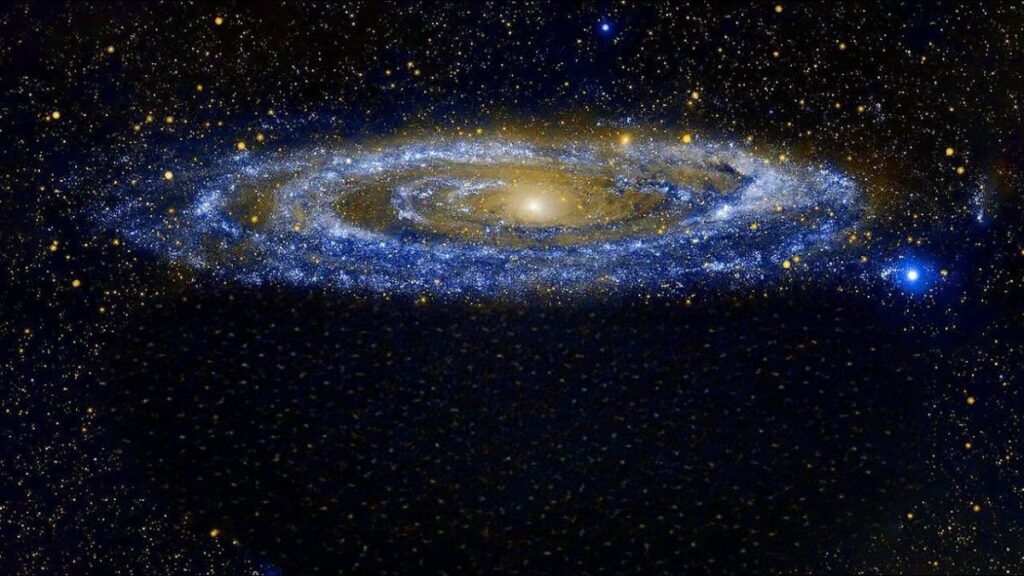
A journey through the Andromeda Galaxy Andromeda is a large spiral galaxy, a big monster of about 1 trillion solar masses.
It lies about 2.5 million light years away from the Earth, but this distance will shorten with time because Andromeda is moving towards us at the crazy speed of 68 miles (110 kilometers) per second.
In some billion years, it will collide with our galaxy.
This will be the collision of the two largest galaxies in our Local Group!
Eventually, the two galaxies will merge into one.
Scientists often refer to the new object as Milkdromeda, but I’m sure there could be better names for it.
What would you call it?
Andromeda is a really interesting galaxy, and it has always played a crucial role in helping us understand our place in the universe.
This video will show you everything that you need to know.
Oh, I almost forgot: our cute neighbor is an evil cannibal galaxy.
We’ll talk about this as well: don’t miss out!
How to spot Andromeda The Andromeda galaxy is the second most famous galaxy in astronomy, after the Milky Way, at least for us humans!
According to the standard astronomical classifications, we can identify 4 types of galaxies: spiral; barred spiral; elliptical, and irregular.
Andromeda is a barred spiral galaxy, just like the Milky Way.
A barred spiral galaxy is a spiral galaxy with a central bar-shaped structure composed of stars.
Bars are found in about two-thirds of all spiral galaxies, and generally affect both the motions of stars and interstellar gas within spiral galaxies and can affect spiral arms as well.
The Andromeda galaxy is located 2.48 million light-years from Earth, as we will see later in the video, but I’m sure among you guys there’s someone who has just acquired a telescope and wants to find objects in the night sky.
Well, I have good news!
You can spot Andromeda on a clear night, by pointing your telescope toward the Andromeda constellation.
The first path to Andromeda starts from the constellation Cassiopeia.
Cassiopeia is easy to find because its stars form a distinctive “W” shape.
You can use it as a reference constellation to find the Andromeda Galaxy!
If you have a binocular, and most importantly if the sky is dark – which means, you’re in a place where light pollution is small – you will be able to see a pale puff of smoke, slightly elongated.
That’s Andromeda!
And if you’re lucky enough, under optimal circumstances, you can also spot Andromeda with the naked eye.
Well, ladies and gentlemen, for the Northern hemisphere, this is a real miracle: Andromeda is the only EXTRAGALACTIC object we can see with our naked eye.
It is the further object our eyes can catch.
Isn’t it amazing?
The light from billions of stars traveled for a distance corresponding to 2.48 million light-years, meeting all sorts of atoms and molecules, and finally fell in the pupil of your eye.
Andromeda has a diameter of about 46.56 kiloparsecs (152,000 light years), making it larger than the Milky Way in terms of extension.
If it wasn’t too faint and we could see the full Andromeda galaxy – spiral arms included – with the naked eye, this is how it would look like.
Don’t you think it’s beautiful?
The mass of the Andromeda galaxy is huge, with about 1 trillion solar masses, of the same order of magnitude as that of the Milky Way, even if most estimates are subjected to errors.
For example, before 2018, Andromeda was thought to be two or three times the size of the Milky Way, but more recent measurements showed that our neighbor is just about the same size as our own galaxy.
History of the observations Anyway, where did we get all this knowledge about our neighboring galaxy?
Apparently, everything started in the year 905, when a Persian astronomer described the presence of a “small cloud” in the Andromeda constellation.
Star charts of that period have it labeled as the Little Cloud.
But it took humanity more than 7 hundred years to get the first description of the object, based on telescopic observations by Simon Marius.
Then, the famous astronomer Charles Messier labeled it as M31 in his famous catalog.
Nowadays, this galaxy is known by a bunch of different equivalent names.
You can call it Andromeda or M31, or NGC 224.
They all refer to the same, beautiful galaxy.
Observations carried out by Herschel and Huggins, turned out to be really precious, but by the end of 1884, Andromeda was still considered only a “puffy cloud”, or “nebula”.
One important thing to be noted here is that, back then, no one knew about the presence of other galaxies beyond the Milky Way.
Some people argued that these nebulae were “island universes” – objects like our Milky Way galaxy, but external to it.
Others disagreed, and thought that these spiral objects were clouds of gas within the Milky Way.
The argument went on until the 1920s when the American astronomer Edwin Hubble finally measured the distance of Andromeda.
Let’s see how he came up with this conclusion and forever revolutionized the understanding of our place in the universe!
Andromeda and Hubble Edwin Hubble is a name synonymous with the study of extragalactic astronomy.
In 1923, he made a groundbreaking discovery when he discovered that the “Andromeda Nebula” was actually a distant galaxy and not just a “puffy cloud”.
This observation marked the end of a long-standing debate about the nature of spiral nebulae and changed the way astronomers view our universe.
The astrophysics genius realized that one of the objects he was observing within the fuzzy nebula was in fact a Cepheid variable star.
These stars’ brightness changes periodically over time.
What’s so important about cepheids?
Well…allow me to explain.
In the early 1900s, Henrietta Leavitt, an American astronomer, found what is now known as the Period-Luminosity relationship, a link between the luminosity of a Cepheid and its period.
Basically, by studying the variation in the light coming from a Cepheid over time, we can get its intrinsic luminosity.
This is really important because, if we know the intrinsic luminosity of an object, we can get the distance at which it must be placed in order to get the observed brightness.
It’s a simple concept, really.
Think about it this way: you have two equal cars, equipped with the same headlights.
If you place one of them further than the other, and you switch them on, you will see one’s lights brighter than the other.
The further you place the second car, the dimmer it will appear to you, even though the cars have the exact same headlights.
Therefore, the observed brightness depends on the distance between you and the cars.
The same thing happens with stars and objects in the universe.
The further the object, the dimmer it will appear in general.
But if you know the intrinsic value of the brightness of the headlights – or the star – you can then estimate the distance between you and the object of interest.
By utilizing the Period-Luminosity (P-L) relation, then, Hubble was able to measure the period of a Cepheid in the Andromeda nebula and use it to determine its luminosity and distance from the Earth.
Since the Cepheid star belonged to Andromeda, its distance was equivalent to the distance of the galaxy.
The number he calculated was the number that changed our way of seeing the universe forever: about 1 million light years, a figure that placed what was known as the Andromeda “nebula”, VERY, MUCH more distant than hitherto assumed, a distance that necessarily had to be located OUTSIDE our Milky Way!
In 1929, Hubble published his findings which included a graph plotting the velocity of galaxies against their distance.
He found that galaxies were moving away from us but at a rate that was proportional to how far away they were.
This became known as Hubble’s Law.
At the time of Hubble’s discovery, the estimated value of the slope of the graph was much higher with respect to today’s estimates, due to an incomplete understanding of Cepheid variables.
However, recent advances in astronomy have enabled researchers to narrow down the value of “Hubble’s constant” to ~70 km/s/Mpc (to the voiceover: kilometers per second per cubic megaparsec) This means that galaxies recede an extra 70 km/s for every megaparsec of distance from us.
Edwin Hubble’s discoveries revolutionized the way astronomers think about our universe, and the impact of his work continues to be felt today.
The Hubble space telescope, the most famous space telescope ever built, and perhaps the best so far was named after him.
And guess what?
This image, captured with the NASA/ESA Hubble Space Telescope, is the largest and sharpest image ever taken of the Andromeda galaxy.
This is actually a cropped version of the full image and has 1.5 billion pixels.
There’s no way you could display the whole image: you would need more than 600 HD television screens.
It is the biggest Hubble image ever released and shows over 100 million stars and thousands of star clusters embedded in a section of the galaxy’s pancake-shaped disc stretching across over 40 000 light-years.
Thanks, Hubble!
The local group, Andromeda eating other galaxies, cannibalism So we have seen how Andromeda was crucial for us here on Earth: without exaggerating, we could say the measurement of the distance of Andromeda allowed a shift of paradigm: before it, we thought the universe coincided with our galaxy; after it, we knew our galaxy was not alone anymore.
Nowadays, billions of galaxies are thought to populate the universe, and they have different shapes and sizes.
As we already mentioned, some of them are elliptical galaxies, others are spiral galaxies, and some of them are irregular, with their crazy shapes.
Most of these galaxies are far away from our home galaxy, but our Local Group of galaxies is different.
It consists of our neighboring galaxies within the vast universe.
It is composed of nearby galaxies in the vast universe, located within roughly 5 million light-years of space around us with a diameter of about 10 million light-years.
Andromeda and the Milky Way are not the only members of the local group: there’s also the Triangulum galaxy, as well as 50 dwarf galaxies.
This small cluster of galaxies can be considered relatively close as it is only millions of light-years away instead of billions.
From a dark site, some of the galaxies in the Local Group are even visible to the unaided eye.
It is believed that the Local Group does not have a true center; rather, the gravity center lies somewhere between the Milky Way and the Andromeda Galaxy, the two most massive galaxies of the group.
This is really beautiful: we could say we are part of a family of galaxies, formed who knows how billions of years ago.
But there’s something more: are you ready to get your mind blown away?
Astronomers have discovered that our Local Group is on the outskirts of a giant supercluster of galaxies, known as the Virgo Supercluster.
The incredible thing is that, while our Local Group is considered a large structure, it is relatively small in comparison to this supercluster.
Nonetheless, it is still a spectacular feat that we are able to observe and learn more about our neighboring galaxies from the comfort of our own home galaxy.
Unfortunately, some of the members of the Local Group have been probably less lucky than others, and have been eaten and swallowed.
The Andromeda Galaxy is in fact an example of an impressive cosmic cannibal.
Galactic cannibalism is a common phenomenon that occurs in the universe, which refers to the process in which a large galaxy, through tidal gravitational interactions with a companion, merges with that companion; which results in a larger galaxy.
Basically, this is how galaxies get fat.
In a study published in Nature, an international team of astronomers has reconstructed the history of this evil spiral galaxy and has concluded that Andromeda has swallowed up smaller galaxies at least twice over its 10 billion-year lifespan.
Using 77 globular clusters orbiting Andromeda, the team was able to measure the velocities of these clusters and reach the conclusion that Andromeda has undergone two distinct ‘feeding frenzies’ – one of which was more recent and another ancient.
This has resulted in the galaxy being warped and twisted, with a much more violent past than the Milky Way.
The research offers a greater insight into how galaxies like ours form and will help us better understand their evolution throughout the Universe.
Andromeda offers a great example of how galaxies can feed off one another as well as a reminder of the power of astronomical research – our next-door neighbor is a monster, and thanks to science, we now know just how.
In general, the cannibalism phenomenon can happen whenever two galaxies start an interaction.
These are some of the amazing images of interactive galaxies we found!
What do you think about the cannibalism phenomenon?
Do you find it scary?
Dark Matter Among other things, Andromeda could help us shed light on one of the unanswered questions in astrophysicists: does dark matter really exist?
In 2017, NASA’s Fermi Gamma-Ray Space Telescope found a signal at the center of the galaxy.
This could indicate the presence of the elusive dark matter.
Gamma rays are really powerful rays of light, produced by the universe’s most energetic phenomena.
What scientists expect from dark matter in galaxies is for it to accumulate in the innermost regions.
Well… guess what?
Surprisingly, Fermi’s data shows the gamma rays in Andromeda are confined right in the galaxy’s center!
Scientists think the gamma-ray excess could actually be produced by a variety of processes.
For example, a possible source for this emission could be a rich concentration of pulsars in M31’s center.
These peculiar objects are among the densest objects in the universe: they are so dense that one teaspoon of a pulsar would weigh a billion tons on Earth!
Some pulsars emit light in the gamma regime, but it is really hard to spot individual pulsars in a galaxy like Andromeda, 2.48 million light-years away!
Of course, more observations will be needed to determine the source of the gamma-ray signals coming from Andromeda’s center, but this discovery surely provides an exciting starting point to learn more about galaxies, and perhaps the mysterious nature of dark matter.
Collision with theMilky Way We talked a lot about Andromeda and its features, going through past observations and present knowledge.
But what does the future hold for this galaxy?
Let’s look at 4.5 billion years into it.
Imagine: some of your descendants are standing with their teacher, looking up at the night sky.
Thousands of stars are shining bright, and a bunch of them are being born, their teacher tells them, because of an immense cosmic event.
The Milky Way has collided with Andromeda.
Although the relative velocity of the two galaxies is something like a million miles an hour, the whole process took millions of years to complete.
The teacher tells them that, when everything settles down, the two galaxies have merged into a bigger one, Milkdromeda.
You can imagine both the stupor and the fear of the kids, but the good teacher reassures them there is a very tiny chance of stars from the Andromeda galaxy hitting the Sun or the Earth: the stars in a galaxy are spaced very far apart!
To make a comparison, they are just like grains of sand separated by the length of a football field!
This is our destiny.
A slow collision with our galactic neighbor.
This is how the universe changes over time, in an ever-ending cosmic dance between galaxies.
In any case, the collision of the two galaxies is estimated to occur in 0.5 to 1.5 billion years and, by this time, the Sun’s luminosity will have already increased by 35-40%, causing a runaway greenhouse effect on Earth and making it too hot for liquid water to exist, resulting in the end of all terrestrial life.
If we want to watch the two galaxies merging, it would probably have to be from another planet.
Recap: Well done, guys!
This was a lot of information.
I hope you learned something meaningful today!
Here’s a recap for those of you who have a short memory.
Andromeda is a spiral galaxy estimated to be 1 trillion solar masses in mass, and a diameter of 152,000 light-years, making it larger than the Milky Way.
It was first seen by the Persian astronomer in 905 and officially labeled as M31 in Charles Messier’s catalog.
Astronomer Edwin Hubble concluded it to be 1 million light-years away in 1929, revolutionizing how astronomers view our universe.
Andromeda and the Milky Way are both part of the Local Group, a cluster of galaxies within 10 million light-years in diameter.
Andromeda has been found to have swallowed up smaller galaxies at least twice over its 10 billion-year lifespan.
In 2017, the Fermi Gamma-Ray Space Telescope found a signal in the center of the galaxy, indicating the presence of possible dark matter.
But the most amazing fact about Andromeda is that, in 4.5 billion years, it will collide with the Milky Way, merging into a larger galaxy.
However, due to the stars in a galaxy being spaced very far apart, there is a very tiny chance of stars from the Andromeda galaxy hitting the Sun or the Earth.
By that time, the Sun’s luminosity will have increased by 35-40%, causing a runaway greenhouse effect on Earth and making it too hot for liquid water to exist, resulting in the end of all terrestrial life.
